In the vast tapestry of Greek mythology, few figures are as intriguing as Queen Leda. Her tales, interwoven with passion, deception, and divine intervention, have captivated audiences for millennia.
Leda Key Facts
| Parents | Thestius and Eurythemis |
| Partners | Tyndareus and Zeus |
| Siblings | Althaea and others |
| Offspring | Helen, Clytemnestra, Castor, and Pollux |
| Other names | – |
| Roman name | Leda |
| Best Known Myth | Seduction by Zeus in the form of a swan |
Name and Etymology
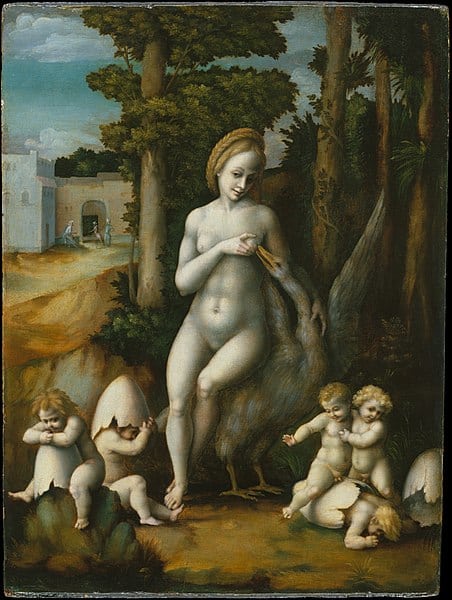
Leda’s name, though Greek in origin, doesn’t have a clear etymology. Some believe it might be related to the ancient Greek word for “woman.” In Roman tales, she retains her name, a testament to her significance across cultures. Throughout various accounts, she’s often referred to by her primary title, “Queen Leda.” However, epithets such as “Mother of Helen” or “The Swan’s Lover” also grace the pages of ancient texts, painting a vivid picture of her legacy.
Leda’s Family and Relationships
Born to King Thestius and Eurythemis, Leda’s lineage was nothing short of royal. Her early life, though not as extensively documented as her later years, was marked by the typical upbringing of a princess. As she blossomed into womanhood, Leda caught the eye of King Tyndareus of Sparta, and they soon wed.
Their union, however, would be overshadowed by a divine encounter; Zeus, smitten by Leda’s beauty, transformed into a swan and seduced her. From this union, two eggs were born, giving rise to Helen, Clytemnestra, Castor, and Pollux. Helen’s beauty and subsequent elopement with Paris would eventually ignite the Trojan War, intertwining Leda’s legacy with heroes like Menelaus, The Spartan King, Agamemnon, and Briseis, Achilles Prize of the Trojan War.
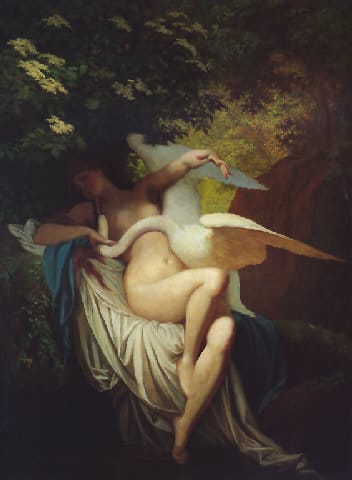
The Nemesis Theory: An Alternative Origin for Helen
While Leda’s union with Zeus is widely accepted as the origin of Helen, Clytemnestra, Castor, and Pollux, there exists an alternative theory that adds another layer of complexity to this tale. According to some sources, Helen was not the direct offspring of Leda but was instead the daughter of Nemesis, the goddess of retribution.
In this version, Zeus, in his relentless pursuit of love, set his sights on Nemesis. To escape him, Nemesis transformed into various animals. However, Zeus, ever the cunning god, mirrored her transformations, eventually taking the form of a swan to seduce her. From their union, an egg was born, which Nemesis, unable to care for, left at the banks of a river. Leda, happening upon this egg, took it under her care. From it emerged the radiant Helen, who, despite her alternate origin, was raised as Leda’s own.
This theory not only underscores Zeus’s persistent nature but also paints a picture of Leda’s nurturing spirit. Regardless of Helen’s true lineage, Leda’s role as her mother and the subsequent events leading to the Trojan War remain pivotal in Greek mythology.
Myths about Leda
Leda’s mythology is a captivating blend of divine intervention, passion, and the intricate tapestry of fate. While her encounter with Zeus as a swan is the most renowned, there are other tales that further illuminate her significance in Greek mythology.
The Swan’s Seduction
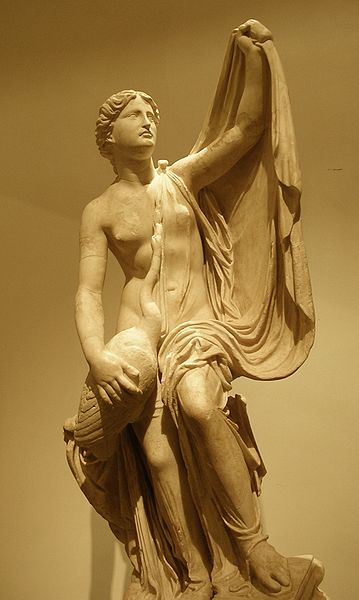
On a serene evening, Leda, the beautiful queen of Sparta, found herself by a riverbank. As she wandered, a swan, pursued by an eagle, sought refuge in her arms. This swan was none other than Zeus, the king of gods, who had taken this form to approach Leda. Their union was both passionate and deceptive, resulting in Leda laying two eggs. From one egg, Helen and Pollux emerged, and from the other, Clytemnestra and Castor. This tale not only underscores Zeus’s cunning but also highlights Leda’s allure and her pivotal role in the birth of figures who would later shape Greek myths.
The Birth of the Dioscuri
Castor and Pollux, also known as the Dioscuri, were the twin offspring of Leda. While Pollux was the divine son of Zeus, Castor was the mortal son of Tyndareus, Leda’s husband. Their contrasting nature – one immortal and the other mortal – led to various adventures and challenges. When Castor was slain in battle, Pollux, unable to bear the loss of his twin, begged Zeus to let him share his own immortality with his brother. Touched by this bond, Zeus granted them alternate days in Olympus and the Underworld, allowing them to be together forever. Their story is a testament to Leda’s legacy, giving birth to heroes who epitomized brotherly love and sacrifice.
Helen: The Face that Launched a Thousand Ships
Helen, often described as the most beautiful woman in the world, was another offspring from Leda’s union with Zeus. Her beauty and subsequent elopement with Prince Paris of Troy led to the decade-long Trojan War. Helen’s life was marked by divine interventions, passionate affairs, and the weight of her beauty, which brought kingdoms to their knees. Through Helen, Leda’s lineage played a central role in one of the most epic wars in Greek mythology.
Depiction And Characteristics
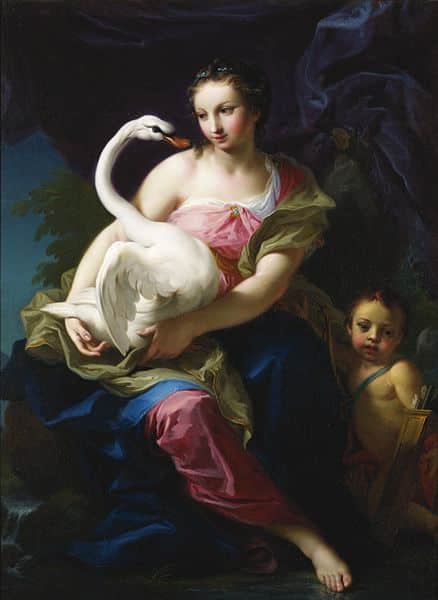
Leda’s beauty was unparalleled, often described with golden hair and eyes that mirrored the depths of the Aegean Sea. In art, she’s frequently portrayed in intimate moments with the swan, symbolizing her divine encounter with Zeus. Beyond her physical attributes, Leda was a figure of resilience and grace. The swan, naturally, became her emblem, but she’s also associated with eggs, representing the unique birth of her children. Her demeanor, as gleaned from myths, was that of a loving mother and a regal queen, forever intertwined with the destinies of her offspring.
Representations Of Leda In Art
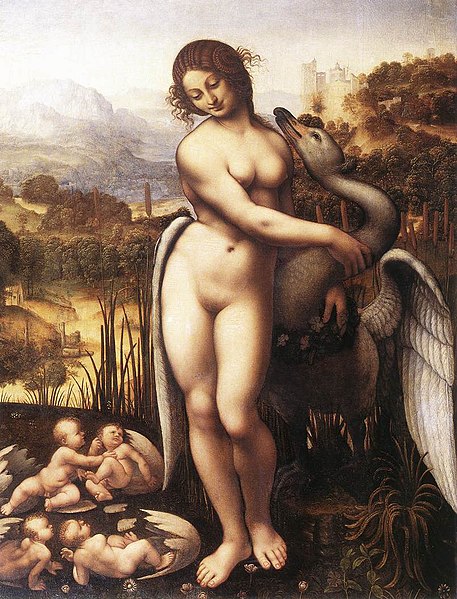
Throughout art history, Leda’s encounter with Zeus has been a favored subject. From sculptures to paintings, artists have been captivated by the tale’s blend of divinity and passion. Perhaps the most renowned depiction is Leonardo da Vinci’s “Leda and the Swan,” though sadly, the original no longer exists. In it, Leda’s grace is palpable, her gaze tender yet melancholic, hinting at the profound implications of her encounter.
Mentions in Ancient Texts
Greek literature is replete with mentions of Leda, her beauty, and her divine encounter. Let’s delve into some of the most significant texts that have immortalized her tale.
Homer’s Iliad
Written around the 8th century BC, the Iliad by Homer, the blind bard of ancient Greece, is an epic that primarily revolves around the Trojan War. Within its verses, Leda’s legacy is subtly hinted at, especially through the character of her daughter, Helen.
“Helen, daughter of Zeus and Leda, the cause of strife.”
Euripides’ Helen
Penned by Euripides, one of the three great tragedians of classical Athens, in 412 BC, this play offers an alternative narrative to Helen’s story. Here, Leda’s significance as Helen’s mother is underscored, and the consequences of her union with Zeus are explored in depth.
“O daughter of Leda, who bore you by the banks of Eurotas.”
Ovid’s Metamorphoses
Ovid, a Roman poet who lived during the reign of Augustus, wrote the “Metamorphoses” in 8 AD. This collection of mythological tales includes the story of Leda and the swan, emphasizing the transformative power of the gods and their often capricious nature. Leda’s encounter is described with poetic finesse, capturing the essence of the myth.
“He felt the joy of birds and was afraid of standing on the ground; and such a king as that, leaving the heavens, hovered above the third river, till he saw the beautiful Leda.”
Frequently Asked Questions
Leda was seduced by Zeus, who had taken the form of a swan. This union resulted in the birth of Helen, Clytemnestra, Castor, and Pollux.
From her union with Zeus, she bore Helen, Clytemnestra, Castor, and Pollux.
Her daughter, Helen, was the famed beauty whose elopement with Paris ignited the war.
Apart from her mortal husband, Tyndareus, Leda’s most significant relationship was her divine encounter with Zeus.
In Roman mythology, Leda retains her name and significance, showcasing her universal appeal.
Featured Image Credit: François-Édouard Picot, Public domain, via Wikimedia Commons

